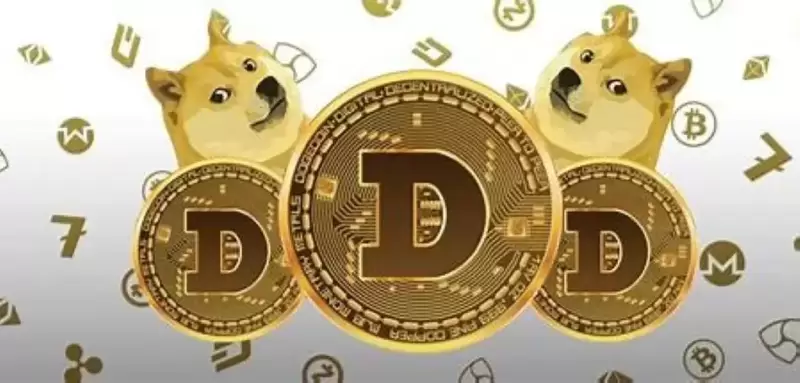 |
|
 |
|
 |
|
 |
|
 |
|
 |
|
 |
|
 |
|
 |
|
 |
|
 |
|
 |
|
 |
|
 |
|
 |
|
去中心化金融(DeFi)作為一個革命性的概念被引入,預計將透過創建一個沒有銀行、經紀人或其他中心化機構等中介機構的點對點金融生態系統來顛覆傳統金融。

Decentralized finance (DeFi) was introduced as a revolutionary concept, promising to disrupt traditional finance by creating a peer-to-peer financial ecosystem without intermediaries such as banks, brokers, or other centralized institutions. The core idea behind DeFi is to leverage blockchain technology to build open, transparent, and decentralized financial services accessible to anyone with an internet connection.
去中心化金融(DeFi)作為一個革命性的概念被引入,預計將透過創建一個沒有銀行、經紀人或其他中心化機構等中介機構的點對點金融生態系統來顛覆傳統金融。 DeFi 背後的核心理念是利用區塊鏈技術建立開放、透明、去中心化的金融服務,任何有網路連線的人都可以使用。
However, as the DeFi market has evolved, a paradox has emerged: despite its foundations being built on decentralization, many DeFi platforms and protocols are exhibiting characteristics of centralization. This is in direct contrast to the initial promise of creating an entirely decentralized financial system. In this article, we will explore the reasons behind this trend, the challenges DeFi platforms face in achieving true decentralization, and the implications this has for the future of the DeFi market.
然而,隨著 DeFi 市場的發展,一個悖論也出現了:儘管其基礎是去中心化的,但許多 DeFi 平台和協議卻呈現出中心化的特徵。這與創造完全去中心化的金融體系的最初承諾形成鮮明對比。在本文中,我們將探討這一趨勢背後的原因、DeFi 平台在實現真正去中心化方面所面臨的挑戰,以及這對 DeFi 市場的未來的影響。
Before diving into why decentralization is lacking in the DeFi market, it’s essential to understand what DeFi is and how it is supposed to work.
在深入探討 DeFi 市場缺乏去中心化的原因之前,有必要了解 DeFi 是什麼以及它應該如何運作。
DeFi refers to a set of financial services and products built on blockchain networks, primarily Ethereum, that aim to replicate traditional financial instruments such as lending, borrowing, trading, insurance, and asset management—without the need for a central authority. The idea is to provide financial services through smart contracts, which are self-executing contracts with the terms of the agreement directly written into code. These smart contracts are transparent, immutable, and decentralized.
DeFi 是指建立在區塊鏈網路(主要是以太坊)上的一組金融服務和產品,旨在複製傳統的金融工具,如借貸、交易、保險和資產管理,而無需中央機構。這個想法是透過智能合約提供金融服務,智能合約是自動執行的合約,協議條款直接寫入代碼。這些智能合約是透明的、不可變的和去中心化的。
Key components of the DeFi ecosystem include:
DeFi 生態系統的關鍵組成部分包括:
* **Decentralized protocols:** These are the underlying blockchain networks and smart contracts that power DeFi applications, enabling users to interact with each other and perform various financial transactions without the involvement of a central authority. Examples include Ethereum, Aave, and Uniswap.
* **去中心化協議:** 這些是為 DeFi 應用程式提供支援的底層區塊鏈網路和智慧合約,使用戶能夠在沒有中央機構參與的情況下相互互動並執行各種金融交易。範例包括以太坊、Aave 和 Uniswap。
* **Decentralized applications (dApps):** These are user-facing interfaces that allow users to access and interact with DeFi protocols in a convenient and intuitive way. Some popular dApps include MetaMask, Uniswap Interface, and Aave Web App.
* **去中心化應用程式(dApp):** 這些是面向使用者的介面,允許使用者以方便直觀的方式存取 DeFi 協定並與之互動。一些流行的 dApp 包括 MetaMask、Uniswap Interface 和 Aave Web App。
* **Decentralized exchanges (DEXs):** These are peer-to-peer marketplaces that facilitate the trading of cryptocurrencies without the need for a centralized intermediary. Instead, trades are executed directly between users through smart contracts. Examples include Uniswap, Sushiswap, and PancakeSwap.
* **去中心化交易所 (DEX):** 這些是點對點市場,無需集中中介即可促進加密貨幣交易。相反,交易是透過智能合約在用戶之間直接執行的。例子包括 Uniswap、Sushiswap 和 PancakeSwap。
* **Governance tokens:** Many DeFi protocols issue their own tokens, which serve as a native currency within the protocol and also grant holders the ability to participate in the governance of the protocol. By holding and using governance tokens, users can vote on changes to the protocol, such as interest rates, new features, and protocol upgrades.
* **治理代幣:** 許多 DeFi 協議都會發行自己的代幣,這些代幣充當協議內的原生貨幣,並賦予持有者參與協議治理的能力。透過持有和使用治理代幣,用戶可以對協議的變更進行投票,例如利率、新功能和協議升級。
Decentralization in DeFi is crucial because it removes the need for trusted intermediaries. Users can interact directly with protocols, smart contracts, and other users without needing to trust any third party. This leads to greater financial inclusion, transparency, and security.
去中心化在 DeFi 中至關重要,因為它消除了對可信任中介的需求。用戶可以直接與協議、智能合約和其他用戶交互,無需信任任何第三方。這將帶來更大的金融包容性、透明度和安全性。
When DeFi protocols were first launched, the vision was clear: to create a financial ecosystem where users could maintain full control over their assets without relying on centralized financial institutions. This idea was particularly appealing because traditional finance has been heavily centralized for centuries, with banks and institutions controlling access to credit, capital markets, and payment systems.
當 DeFi 協議首次推出時,願景很明確:創建一個金融生態系統,讓使用者可以在不依賴中心化金融機構的情況下保持對其資產的完全控制。這個想法特別有吸引力,因為幾個世紀以來傳統金融一直高度集中,銀行和機構控制著信貸、資本市場和支付系統的准入。
The principles of decentralization in DeFi are supposed to manifest in several ways:
DeFi 的去中心化原則應該體現在以下幾個方面:
* **Decentralized governance:** DeFi protocols are typically governed by a community of users who hold the protocol's governance tokens. This decentralized governance structure allows users to participate in decision-making and influence the direction of the protocol without the control of a single entity.
* **去中心化治理:** DeFi 協議通常由持有該協議治理代幣的用戶社群進行治理。這種去中心化的治理結構允許使用者參與決策並影響協議的方向,而無需單一實體的控制。
* **Autonomous operation:** DeFi protocols are designed to function autonomously, without the need for manual intervention or centralized control. Once deployed on the blockchain, the protocol's rules and parameters are set and enforced automatically by the smart contracts.
* **自主運作:** DeFi 協定旨在自主運行,無需人工幹預或集中控制。一旦部署在區塊鏈上,協議的規則和參數將由智能合約自動設定和執行。
* **Open and permissionless access:** DeFi protocols are usually open to anyone with an internet connection, without the need for approval or authorization from a central entity. This inclusivity promotes a level playing field and fosters a diverse community of users.
* **開放且無需許可的存取:** DeFi 協議通常對任何有網路連線的人開放,無需中央實體的批准或授權。這種包容性促進了公平的競爭環境並培養了多元化的用戶社群。
* **Pseudonymous interactions:** DeFi protocols typically allow users to interact and perform transactions without revealing their real-world identities. This pseudonymity enhances privacy and protects users from discrimination or censorship.
* **假名互動:** DeFi 協定通常允許使用者在不透露其真實身分的情況下進行互動和執行交易。這種假名增強了隱私並保護用戶免受歧視或審查。
Despite these lofty goals, the DeFi market is struggling to achieve true decentralization. Let’s look at the key reasons why.
儘管有這些崇高的目標,但 DeFi 市場仍在努力實現真正的去中心化。讓我們看看其中的關鍵原因。
Also, read – What Are Flash Loans In The DeFi Market And Its Top 4 Shocking Examples
另外,請閱讀 – 什麼是 DeFi 市場中的閃電貸及其 4 個令人震驚的例子
Centralization Trends in the DeFi Market
DeFi市場的中心化趨勢
1. Concentration of Token Ownership and Governance Power
1. 代幣所有權和治理權的集中
One of the most significant challenges to decentralization in DeFi is the concentration of token ownership. Many DeFi projects issue governance tokens, which are meant to give token holders the power to vote on protocol upgrades, changes to interest rates, and other crucial decisions. However, a large percentage of these tokens are often held by a small group of investors, early project backers, and venture capital firms.
DeFi 去中心化面臨的最重大挑戰之一是代幣所有權的集中。許多 DeFi 專案都會發行治理代幣,旨在賦予代幣持有者對協議升級、利率變化和其他關鍵決策進行投票的權力。然而,這些代幣的很大一部分通常由一小群投資者、早期專案支持者和創投公司持有。
For example, in some cases, it has been found that less than 10% of token holders control the majority of governance votes. This results in a centralization of decision-making
例如,在某些情況下,我們發現不到 10% 的代幣持有者控制著大多數治理投票。這導致決策集中化
免責聲明:info@kdj.com
所提供的資訊並非交易建議。 kDJ.com對任何基於本文提供的資訊進行的投資不承擔任何責任。加密貨幣波動性較大,建議您充分研究後謹慎投資!
如果您認為本網站使用的內容侵犯了您的版權,請立即聯絡我們(info@kdj.com),我們將及時刪除。
-

-

-

- 現貨比特幣ETF本週的流入量超過3億美元,這是連續第一個積極流動的一周
- 2025-04-26 14:50:12
- 4月25日,11個比特幣(BTC)ETF的流入量為3.8億美元,使一周的總數達到30.6億美元左右
-

- 希伯(Shib)為看漲的複興奠定了基礎,佩佩(Pepe)也是如此
- 2025-04-26 14:50:12
- 儘管這兩個模因硬幣已經看到了市場的統治地位,但Shib在過去兩周中的價格上漲了16.5%。
-

- 比特幣的優勢推向關鍵的歷史閾值
- 2025-04-26 14:45:12
- 即使在價格校正期間,比特幣對加密市場的主導地位仍在繼續憤怒,這強調了4月的大部分價格行動。
-

- 巴西的新XRPH11 ETF可能是邁向全球採用的重要一步
- 2025-04-26 14:45:12
- 新的巴西XRPH11 XRP ETF已啟動,已準備好今天進行交易。根據報告,該ETF已啟動
-

-

-



























































